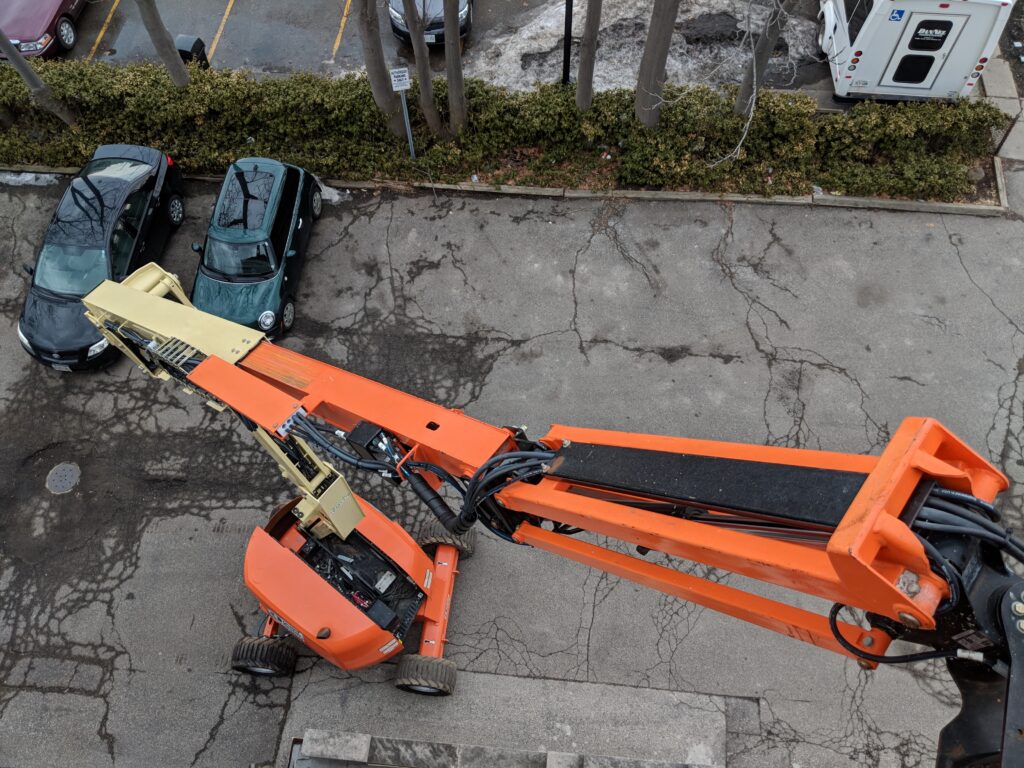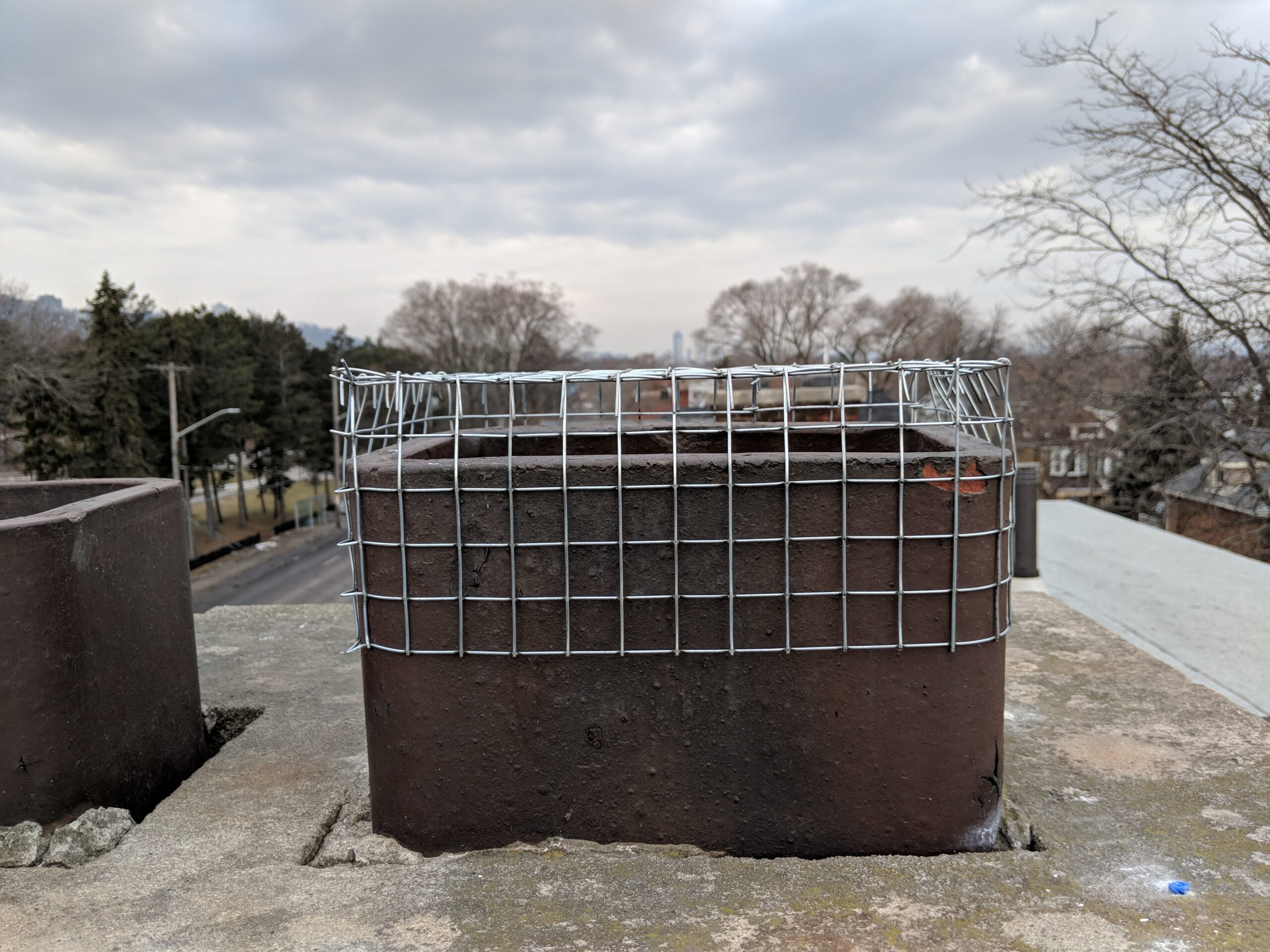We are all familiar with the masked bandits that are stalking our city streets and entering our homes through unsecured chimneys and vents in the dead of night. As our urban landscape has expanded and concrete paths and high-rise buildings have replaced forests and open fields, many animals have been forced to move deeper into the wild, but not the crafty raccoon. They have adapted extremely well to living alongside us in the concrete jungle.
Raccoons are both clever and cunning, they love to raid our garbage bins and make dens in attics and basements. Anyone living alongside raccoons has witnessed how adept they are at climbing walls, trees and drainpipes and finding their way into our nice warm homes. But the question is, how high will a raccoon climb to reach its goal? And the answer; as high as it needs to. In St. Paul, Minnesota, a raccoon climbed the 25 story UBS tower, capturing the hearts of people around the world and becoming an instant internet sensation. At Skedaddle we have seen first hand that height is no deterrent for a determined raccoon.
Our wildlife technicians in Hamilton recently removed raccoons that were living in the chimney of a commercial building. The amazing thing about this removal was not that the raccoons were living in the chimney, that is pretty common, but that the chimney was approximately 50 ft in the air.
As our technician, Brandon, explains, “This building is a business and they have a tenant living in the basement. He was complaining of noises in the wall. Once I got on site, I determined that raccoons were living in the chimney. They had managed to get inside after a large steel cap had blown off in the wind.” It didn’t take our wildlife technicians long to find the source of the noise in the wall. But solving this problem was a little more challenging than usual and took a bit of time and patience.
How do you Remove a Raccoon From a 50 ft Chimney?
We have years of experience dealing with raccoon removal and thanks to a thorough knowledge of their habits and behaviour, it is typically not a challenge for our technicians to find and remove a raccoon from your home. Raccoons are not particularly subtle about how they enter a property and we simply follow the clues that they have left for us. Once we have identified their entry point, we find their den and we safely remove the raccoon and any babies, before sealing up their entry point and any other places where they are likely to re-enter your home.
Usually, all we need to get a raccoon out of a chimney is a ladder. But this was no ordinary raccoon removal for our team, and it required some specialized equipment. According to Brandon, “this was a costly venture for the customer because unfortunately, we didn’t have access to the base of the chimney to drive the raccoons out, so we had to screen the top of the chimney and install one of our uniquely designed one-waydoors to get them out. The door allows raccoons to exit their den site but blocks their re-entry. In order to complete this job, the customer had to pay for a boom lift. Not once, but twice! First to get the job done and then a second time to remove the one-way door. All the other chimneys also had to be screened preventatively to ensure this doesn’t happen again.”

It is not every day that our technicians get to do their job from the top of a boom lift and this job clearly demonstrates the lengths they will go to in order to safely and humanely remove raccoons and other wildlife from your property and install humane wildlife control measures.
The raccoons in the 50ft chimney is not the only time that we have seen these masked bandits scaling great heights. Another example was a homeowner who called Skedaddle because they had a raccoon on their apartment balcony. It is obviously not unusual for us to receive such a call, except that in this case, the apartment was on the 10th floor! Our wildlife technicians went out fully prepared to catch the raccoon and take it back down to the ground, but the animal had other ideas and climbed down the brick wall of the apartment building unaided.
How do raccoons scale great heights?
Both the examples we have mentioned above, demonstrate how adept raccoons are at climbing up and down the sides of buildings. So how do they do it? Climbing is a vital skill for the survival of raccoons in any environment, urban or rural, and mothers will teach their kits to climb from a young age, patiently helping them to master the art of getting to the top of the tallest tree or building in their immediate environment. What makes them great climbers is the fact that they are very dexterous and have strong claws at the end of their fingers. This allows them to grasp objects or climb just about anything, from a garbage can or a tree to a brick building or wall. Raccoons can also rotate their feet 180 degrees, and this enables them to climb down a tree or building head first, making the descent as easy as the ascent. But their amazing paws are not just great for climbing they are also extremely sensitive to touch, and raccoons have almost five times more sensory cells in their paws than other mammals. This enables them to “see” with their paws and identify objects even without looking at them.
Prevention is always better than cure when it comes to raccoons
Being accomplished climbers helps raccoons escape predators in the wild but it also gives them access to all sorts of great places to make their dens. That is why it is so important that you raccoon proof your property properly and ensure that these cunning bandits can’t gain access to your attic or basement, especially during the baby season when they are looking for warm, cozy places to raise their babies.
Raccoons can wreak havoc in your attic and the damage, as well as the costs, can be extensive. Raccoon removal is not a DIY project and for your own safety, as well as that of the animal, you should never attempt it yourself. If a raccoon makes a den in your home, it is highly recommended to call in a humane wildlife control expert to safely remove the animal and carry out the clean-up and repair process, including deodorizing and re-insulating your attic.
Our wildlife technicians will do a thorough inspection of your property, identify potential entry points and make recommendations on how to keep raccoons out. We will also provide a quote for installing humane wildlife control measures that we can guarantee you will work. Our wildlife technicians are trained and equipped to deal with any wildlife situations and know how to secure your home.



